7 books about Gilson, Etienne
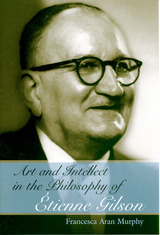
Art and Intellect in the Philosophy of Étienne Gilson
Francesca Aran Murphy
University of Missouri Press, 2004
In Art and Intellect in the Philosophy of Étienne Gilson, Francesca Aran Murphy tells the story of this French philosopher’s struggle to reconcile faith and reason. In his lifetime, Gilson often stood alone in presenting Saint Thomas Aquinas as a theologian, one whose philosophy came from his faith. Today, Gilson’s view is becoming the prevalent one. Murphy provides us with an intellectual biography of this Thomist leader throughout the stages of his scholarly development.
Murphy covers more than a half century of Gilson’s life while reminding readers of the political and social realities that confronted intellectuals of the early twentieth century. She shows the effects inner-church politics had on Gilson and his contemporaries such as Alfred Loisy, Lucien Lévy Bruhl, Charles Maurras, Henri de Lubac, Marie-Dominique Chenu, and Jacques Maritain, while also contextualizing Gilson’s own life and thoughts in relation to these philosophers and theologians.
These great thinkers, along with Gilson, continue to be sources of important intellectual debate among scholars, as do the political periods through which Gilson’s story threads—World Wars I and II, the rise and fall of Fascism, and the political upheavals of Europe. By placing Gilson’s twentieth-century Catholic life against a dramatic background of opposed political allegiances, clashing spiritualities, and warring ideas of philosophy, this book shows how rival factions each used their own interpretations of Thomas Aquinas to legitimate their conceptions of the Catholic Church. In Art and Intellect in the Philosophy of Étienne Gilson, Murphy shows Gilson’s early openness to the artistic revolution of the Cubist and the Expressionist movements and how his love of art inspired his existential theology. She demonstrates the influence that Henri Bergson continued to have on Gilson and how Gilson tried to bring together the intellectual, Dominican side of Christianity with the charismatic, experiential Franciscan side.
Murphy concludes with a chapter on issues inspired by the Gilsonist tradition as developed by recent thinkers. This volume makes an original contribution to the study of Gilson, for the first time providing an organic and synthetic treatment of this major spiritual philosopher of modern times.
[more]
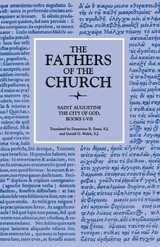
The City of God, Books I–VII
Saint Augustine
Catholic University of America Press, 1952
No description available
[more]

Heloise and Abelard
Etienne Gilson
University of Michigan Press, 1960
Recounts the most famous love story of the Middle Ages
[more]
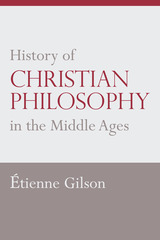
History of Christian Philosophy in the Middle Ages
Etienne Gilson
Catholic University of America Press, 2019
"A comprehensive analysis of philosophical thought from the second century to the fifteenth century, from the Greek apologists through Nicholas of Cusa. This work is Gilson's magnum opus." - Journal of the History of Ideas
[more]
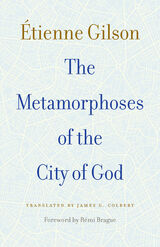
The Metamorphoses of the City of God
Etienne Gilson
Catholic University of America Press, 2021
Étienne Gilson (1884-1978) was a French philosopher and historian of philosophy, as well as a scholar of medieval philosophy. In 1946 he attained the distinction of being elected an "Immortal" (member) of the Académie française. He was nominated for the Nobel Prize in Literature in 1959 and 1964.
The appearance of Gilson's Metamorphosis of the City of God, which were originally delivered as lectures at the University of Louvain, Belgium, in the Spring of 1952, coincided with the first steps toward what would become the European Union. The appearance of this English translation coincides with the upheaval of Brexit. Gilson traces the various attempts of thinkers through the centuries to describe Europe's soul and delimit its parts. The Scots, Catalonians, Flemings, and probably others may nod in agreement in Gilson's observation on how odd would be a Europe composed of the political entities that existed two and a half centuries ago. Those who think the European Union has lost its soul may not be comforted by the difficulty thinkers have had over the centuries in defining that soul. Indeed the difficulties that have thus far prevented integrating Turkey into the EU confirm Gilson's description of the conundrum involved even in distinguishing Europe's material components. And yet, the endeavor has succeeded, so that the problem of shared ideals remain inescapable. One wonders which of the thinkers in the succession studied by Gilson might grasp assent and illuminate the EU's path.
[more]
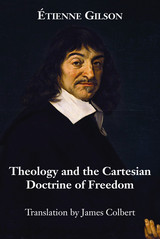
Theology and the Cartesian Doctrine of Freedom
Etienne Gilson
St. Augustine's Press, 2015
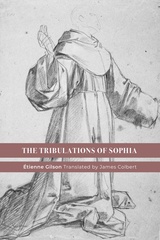
The Tribulations of Sophia
Etienne Gilson
St. Augustine's Press, 2021
The Tribulations of Sophia was the last of Étienne Gilson's books to appear during his lifetime (1967). French readers would have recognized the title's echo of a nineteenth century children's book by the Countess of Ségur, the Misfortunes of Sophia. Its disobedient protagonist, young Sophia (of whom the American Dennis the Menace was to be a very pale imitation) is the cause of a sequence of minor domestic catastrophes. One wonders if Gilson is proposing that the Catholic intellectual world of his day is fraught with her descendants.
The heart of the book is entitled, “Three Lectures on Thomism and its Current Situation.” During the Second Vatican Council and its immediate aftermath, the status of Thomism in Catholic intellectual circles and institutions was vigorously challenged. Once again, the problem of Thomism emerges: What is Thomism and where does it belong? Gilson’s devotion to elaborating the nature of Christian philosophy compels him to confront this question head-on. Indeed, because Gilson approaches Thomism as the veritable model for Christian philosophy he cannot ignore the attempts to suppress or supplant it.
And yet this section also contains a fourth lecture on Teilhard de Chardin, whom Gilson knew and held in high esteem. Was Teilhard's thought to become the new Christian philosophy and theology? Was it even appropriate to label his thought as proper philosophy and theology?
The second, somewhat shorter, portion of the book wrestles with the theme of dialogue that was very much in vogue in the 1960s. The central figure here is the French Marxist Roger Garaudy, internationally known for his call to dialogue with Christians. Gilson denies any possibility of such a dialogue, and certainly any usefulness in it. “I regret to say—not having myself any of the virtues of a skilled dialoguer, which are not to listen to what is being said and to take it in a sense that makes it easy to refute. It is a chimerical hope that there should be two people who proceed otherwise.” But specifically on the point of Christian and Marxist dialogue, from the massive ideological, bestial corpus of Marxism Gilson carves out its fundamental need for the world and serves it back to Garaudy, but without garnish, for among Marxists each has his own particular manner of impoverishing the concept of man.
What might be called the postscript of the book, “Wandering Amid the Ruins,” shares some of Gilson's own experiences and unease in the unsettled situation of the Catholic Church at that time. “The Council was the work of truly supernatural courage. For more than three centuries the Church was harshly blamed for not having taken the initiative to make necessary reforms in the sixteenth century.” Yet Gilson laments that perhaps the manner of enacting reform is confused and not in all cases simply intent on reversing the trends of empty churches and the vocations drought. Perhaps we have not understood the Council at all. Gilson’s kind but clear description of the turmoil in Catholic teaching and thought is for the reader essential to any understanding of the tension and transitions of this period of history.
The heart of the book is entitled, “Three Lectures on Thomism and its Current Situation.” During the Second Vatican Council and its immediate aftermath, the status of Thomism in Catholic intellectual circles and institutions was vigorously challenged. Once again, the problem of Thomism emerges: What is Thomism and where does it belong? Gilson’s devotion to elaborating the nature of Christian philosophy compels him to confront this question head-on. Indeed, because Gilson approaches Thomism as the veritable model for Christian philosophy he cannot ignore the attempts to suppress or supplant it.
And yet this section also contains a fourth lecture on Teilhard de Chardin, whom Gilson knew and held in high esteem. Was Teilhard's thought to become the new Christian philosophy and theology? Was it even appropriate to label his thought as proper philosophy and theology?
The second, somewhat shorter, portion of the book wrestles with the theme of dialogue that was very much in vogue in the 1960s. The central figure here is the French Marxist Roger Garaudy, internationally known for his call to dialogue with Christians. Gilson denies any possibility of such a dialogue, and certainly any usefulness in it. “I regret to say—not having myself any of the virtues of a skilled dialoguer, which are not to listen to what is being said and to take it in a sense that makes it easy to refute. It is a chimerical hope that there should be two people who proceed otherwise.” But specifically on the point of Christian and Marxist dialogue, from the massive ideological, bestial corpus of Marxism Gilson carves out its fundamental need for the world and serves it back to Garaudy, but without garnish, for among Marxists each has his own particular manner of impoverishing the concept of man.
What might be called the postscript of the book, “Wandering Amid the Ruins,” shares some of Gilson's own experiences and unease in the unsettled situation of the Catholic Church at that time. “The Council was the work of truly supernatural courage. For more than three centuries the Church was harshly blamed for not having taken the initiative to make necessary reforms in the sixteenth century.” Yet Gilson laments that perhaps the manner of enacting reform is confused and not in all cases simply intent on reversing the trends of empty churches and the vocations drought. Perhaps we have not understood the Council at all. Gilson’s kind but clear description of the turmoil in Catholic teaching and thought is for the reader essential to any understanding of the tension and transitions of this period of history.
[more]
READERS
Browse our collection.
PUBLISHERS
See BiblioVault's publisher services.
STUDENT SERVICES
Files for college accessibility offices.
UChicago Accessibility Resources
home | accessibility | search | about | contact us
BiblioVault ® 2001 - 2024
The University of Chicago Press









